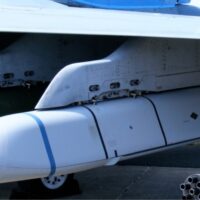Brussels, (Brussels Morning Newspaper) – Mushroom clouds are instantly recognisable as a symbol of the dreaded atomic explosion. However, you won’t find any mushroom clouds in outer space. We have tried it; thus, we know it to be true. It wasn’t unusual for people to speculate about the effects of a nuclear explosion in outer space during the early years of the Cold War. The worry that the Soviet Union might launch a missile across the Atlantic or dump a nuclear weapon from a satellite in orbit was palpable at the dawn of the space era. So that it may learn what nuclear war looks like from space, the United States has detonated its nuclear weapons.
What Nuclear War looks like from space?
From low earth orbit, where clouds did not obscure the explosions, it was possible to see them without a doubt. They would have a brilliant shine. One should have no trouble seeing the most significant eruptions on the Moon.
At a distance of 50 miles, the first visible flash that results from an airburst with a yield of 1 MT lasts for about 10 to 20 seconds and is brighter than the Sun. To ensure that it can be seen clearly from low Earth orbit.
There is a strong possibility that the yield of many nuclear bombs is now less than 1 MT. I am not familiar with the typical return. On the other hand, it seems unimaginable to me that a full-scale conflict between superpowers would not result in many of the explosions being visible from space.
To put this into perspective, it is relatively simple to see satellites from the ground with unaided vision. Furthermore, it is possible to observe a significant flare emanating from a satellite occasionally if the sunlight hits it in precisely the right manner. Therefore, nuclear explosions would be readily visible to the naked eye from orbit. High-altitude tests have been performed that have been visible for at least a thousand miles on the ground, including auroral displays that continued for a significant amount of time following the flash.
Details about the Nuclear Explosion
The first flash of a nuclear explosion, also known as the Pika, is the most noticeable aspect of the blast since it lasts for just a few hundred milliseconds and looks like a gigantic strobe. Pika power is proportional to bomb size. In contrast to Soviet weapons, which were often in the megaton range, most American ones were sub-megaton in size, typically around 500 kilotons.
Large clouds of debris and smoke from firestorms in towns and woods would ultimately cover much of the planet and be visible from out to the moon. However, fireballs and mushroom clouds would be mostly invisible from beyond low earth orbit. Unobscured by Earth’s atmosphere, an explosion in space would be seen on Mars and beyond.
Read More: All Out Destruction: How Will Nuclear War kill You?
The Precise pattern of the Nuclear Explosion
How closely the real environment adhered to the theory would determine the precise pattern of Pika flashes. A nuclear strike in real life is not likely to go as smoothly as they do in movies and fiction. The Soviet Union in 1983 was a disintegrating disaster, and impeccable timing has never been a Russian strength. Their speciality is in launching vicious head-on attacks.
If the Soviets, in their ideologically-driven psychosis, had pressed the button, the actual war would have been a slow-moving cluster of epic proportions, with many missiles exploding in silos and subs and a vast number of units double- and triple-checking the actual order to fire, and many never firing at all.
It’s possible that some members of the Soviet military would flat-out refuse to carry out commands. Historically, Russia’s political culture as a land empire has been marked by a strong distrust of its population and the state. There were still plenty of courageous men who would rather stand and die than accidentally start a nuclear war, even in a totalitarian state where KGB commissars could shoot men outright for disobeying orders. Those responsible for launching nuclear weapons were chosen first for their political reliability. On two separate times, lone Soviet police officers prevented nuclear attacks.
Soviet Member Prevent Explosions
Because of technological breakdown and human reluctance, a nuclear attack is more likely to be haphazard than intended, with a smaller number of warheads detonating at first in a random sequence and lasting for many more hours than anticipated.
Another concern was nuclear-friendly fratricide, which occurred when one weapon detonated and caused the destruction of additional armaments belonging to the same side. In actuality, the Minute Man III may be deployed using the dense pack approach, in which the silos would be arranged side by side in a case like beer trucks. All further approaching Soviet warheads would be destroyed by the debris cloud created by the initial Soviet explosion, but the Minute Man missiles could still pass up through the cloud at launch speed.
Conclusion
To comprehend What nuclear war looks like from space. Starfish Prime, a 1.4-megaton bomb that exploded 250 miles above the globe, was the highest Fishbowl incident. High-altitude bombs lighted up the night sky like ground-based tests, and electromagnetic pulses damaged electronics. As bomb debris descended to Earth, it burnt up in the atmosphere, creating filaments in the brilliant aurora. A lethal light show.



